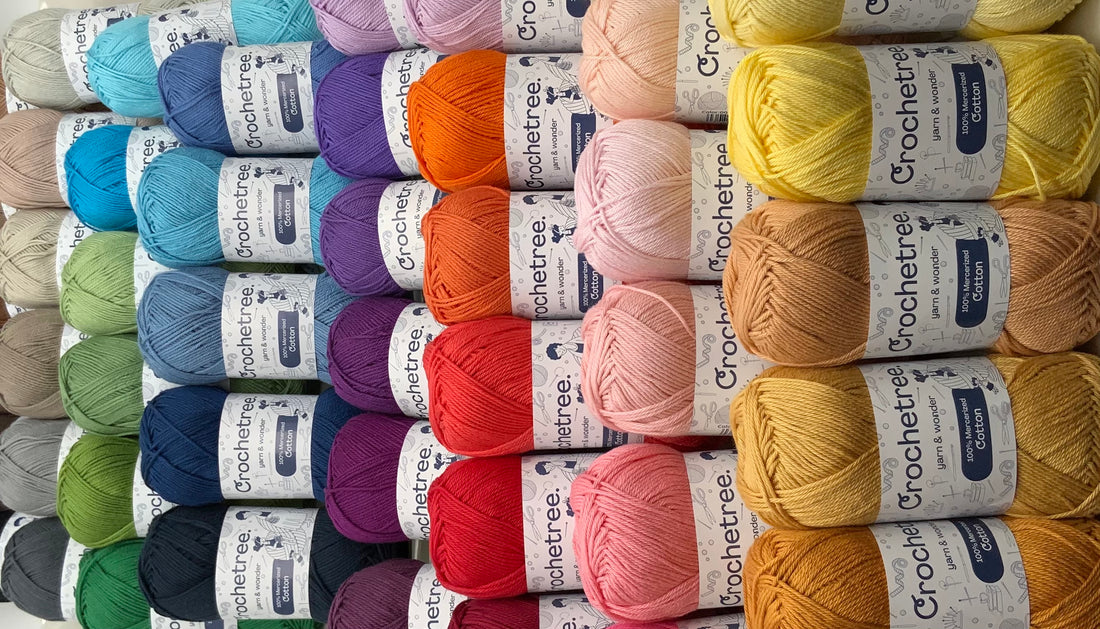Welcome to our blog post where we will be diving into the world of yarn!
Whether you're a beginner or an experienced crocheter, knitter, or weaver, understanding the different types of yarn available is essential to creating beautiful and functional projects.
From natural fibres like cotton and wool, to synthetic options like acrylic and nylon, there is a yarn out there to suit every project and every crafter's preference.
In this post, we'll be exploring the various types of yarn available, their characteristics, and the best ways to use them. We'll take a look at the pros and cons of natural fibres vs synthetic fibres, as well as different weights and textures of yarn. So grab your needles or hook and let's get started!
There are a wide variety of yarns available on the market, each with its own unique properties and characteristics. Some of the most common types of yarn include:
- Natural fibres such as wool, cotton, silk, and linen. These fibres are derived from plants and animals and are known for their breathability, durability, and softness. Natural fibres also have a tendency to absorb moisture, which can make them less suitable for certain projects such as items that need to be washed frequently.
- Synthetic fibres such as acrylic, nylon, and polyester. These fibres are man-made and are known for their durability, resistance to shrinking and stretching, and ease of care. Synthetic fibres are also less expensive than natural fibres and are often used to make items that need to be washed frequently. However, synthetic fibres tend to be less breathable and less comfortable to wear than natural fibers.
Pros of natural fibres:
- They are breathable and comfortable to wear.
- They are durable and can be long lasting.
- They have a natural sheen and texture.
- They are biodegradable.
Cons of natural fibres:
- They can shrink, stretch, and lose shape when wet.
- They can be expensive.
- They can be difficult to care for.
Pros of synthetic fibres:
- They are easy to care for and resistant to shrinking and stretching.
- They are less expensive than natural fibres.
- They are available in a wide range of colours and textures.
- They are good for items that need to be washed frequently.
Cons of synthetic fibres:
- They are less breathable and comfortable than natural fibres.
- They are not biodegradable.
- They can pill easily.
- They can have a synthetic sheen and feel.
- They can be allergic to some people.
Both natural and synthetic fibres have their own unique advantages and disadvantages. The best choice of yarn depends on the specific project, personal preferences, and budget.
In addition to the different types of fibres, yarns also come in a variety of textures and weights. Here are a few examples:
- Texture: Boucle yarn is a textured yarn that has loops of yarn sticking out in different directions, creating a fluffy, curly appearance. Chenille yarn is also a textured yarn with a velvet-like appearance due to the way the fibres are cut. Chenille yarn is often used for making soft and fluffy blankets.
- Weight: Yarns also come in different weights, which refers to the thickness of the yarn. Lace weight yarn is the thinnest and is often used for delicate projects such as doilies and lace shawls. Fingering weight yarn is slightly thicker and is commonly used for amigurumi, like the Crochetree dolls, socks, lightweight sweaters, and shawls. Worsted weight yarn is a medium-thickness yarn and is commonly used for a wide range of projects such as sweaters, blankets, and scarves. Bulky weight yarn is the thickest yarn and is typically used for warm winter accessories such as hats and scarves, and also for making rugs.
- Ply: Yarns can also come in different plies, which refers to the number of strands that are twisted together to make the yarn. A single-ply yarn is made up of one strand of yarn, while a multi-ply yarn is made up of several strands of yarn twisted together. Single-ply yarns tend to be more delicate and can be used for lacy projects, while multi-ply yarns are sturdier and are often used for heavier projects such as blankets and sweaters.
The texture, weight and ply of the yarn you choose will affect the final look, drape and feel of your project. It's important to match the yarn weight and texture to the pattern and project you are working on. You can also use different yarns to create different textures and effects on your project.















